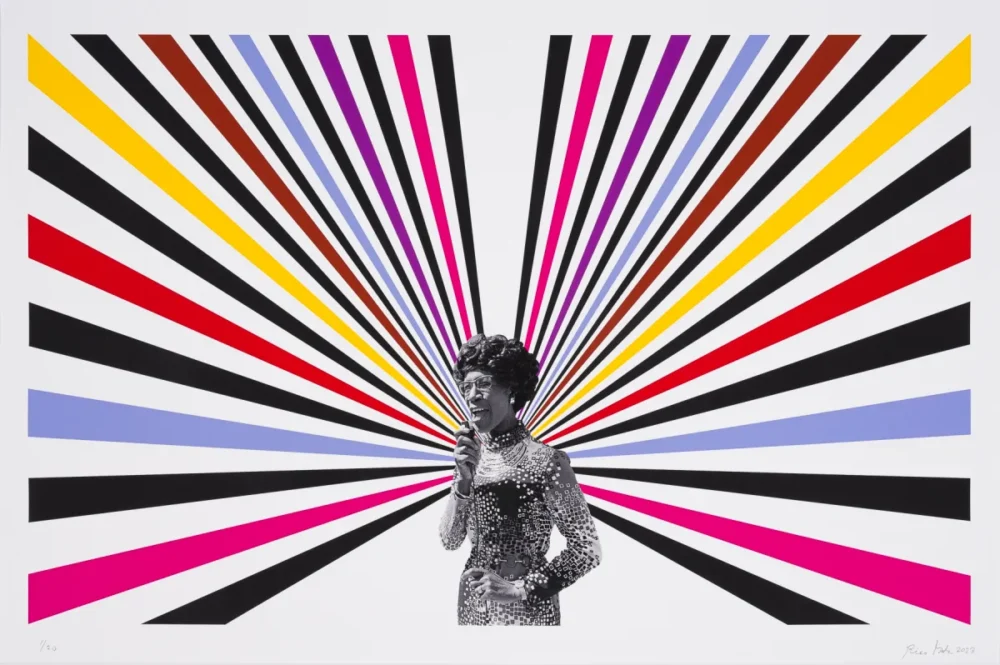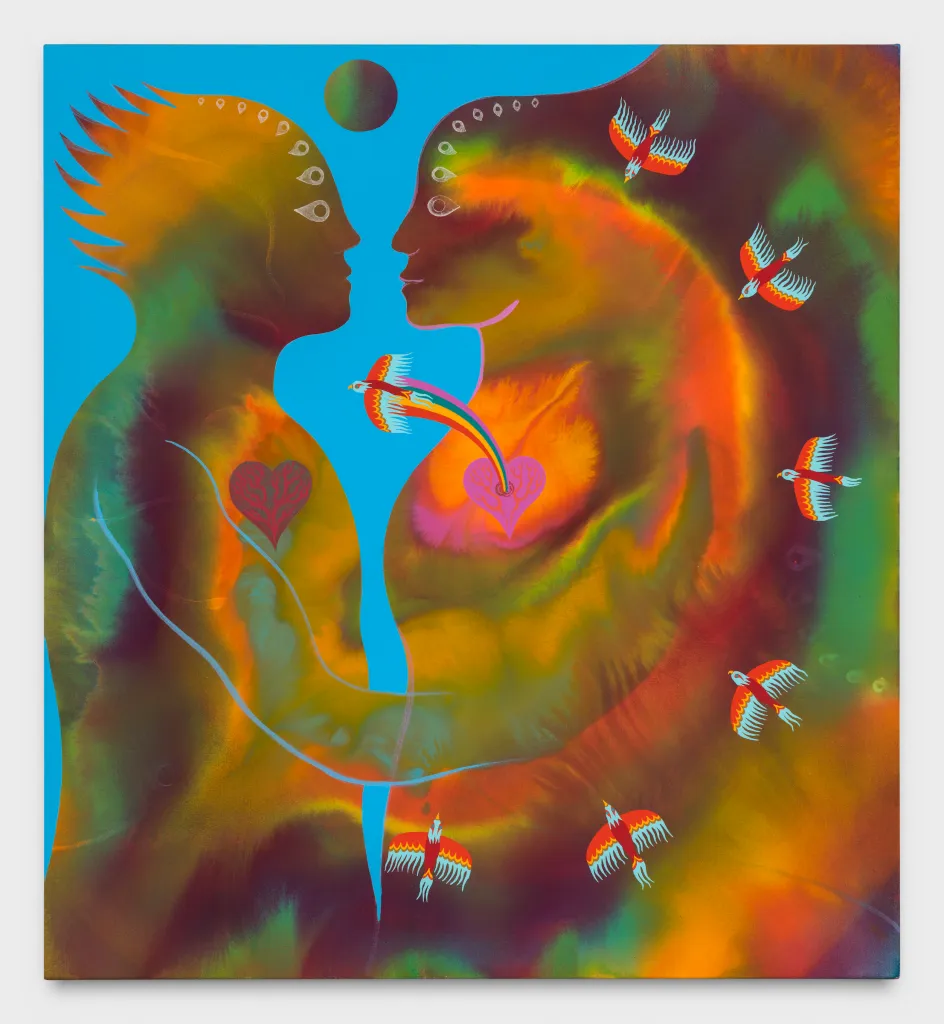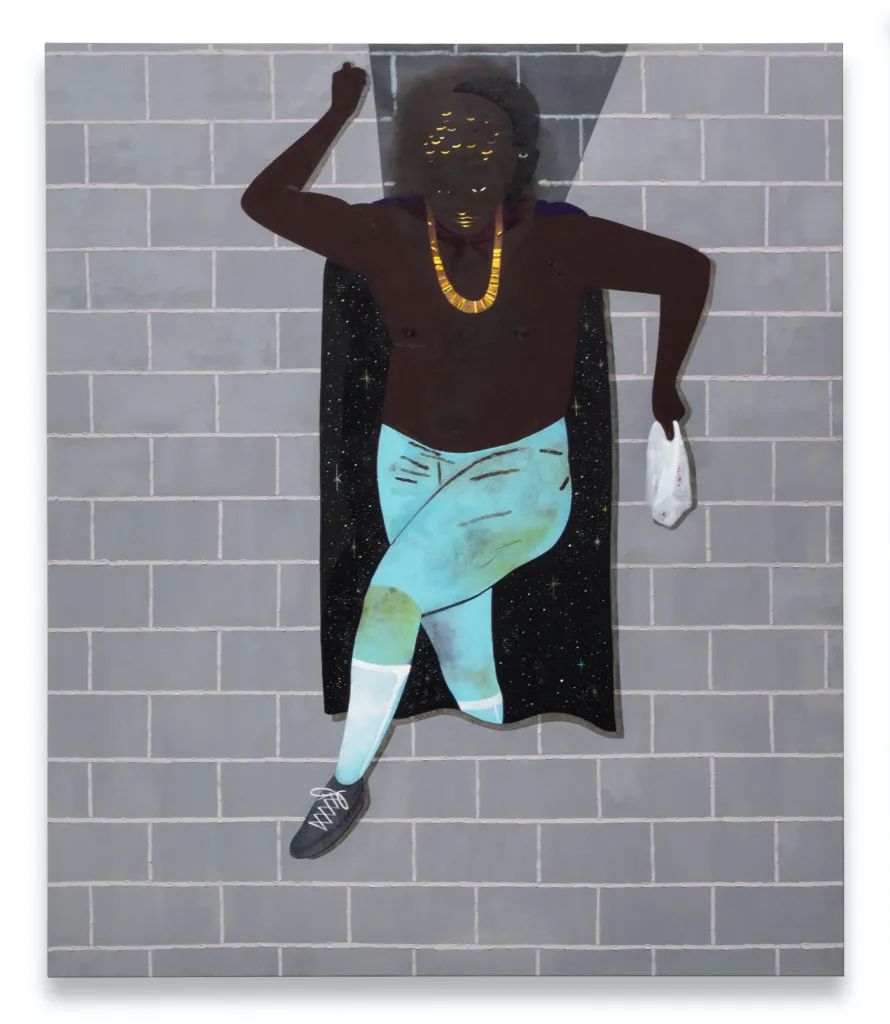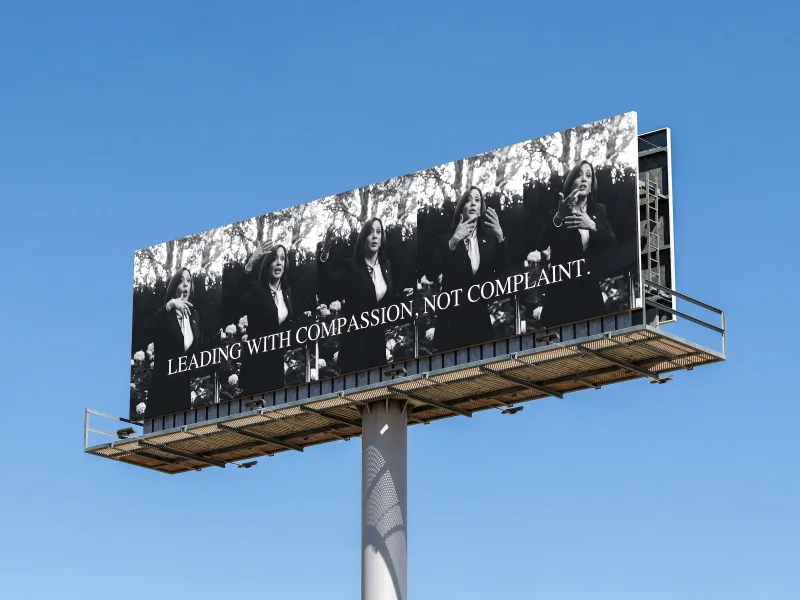
- Source: HYPERALLERGIC
- Author: Isa Farfan
- Date: SEPTEMBER 2, 2024
- Format: DIGITAL
Can Visual Artists Get People to Vote?
Artists including Carrie Mae Weems and Shepard Fairey are joining large-scale campaigns to encourage voter turnout this election season.

Rico Gatson's "Shirley #3" (2023) is being sold to benefit voting participation advocacy. (image courtesy the artist and Art for Change)
If you’re driving on a freeway in a swing state this fall, good luck avoiding politics.
Artists across the United States are joining organized efforts to encourage voter participation, including fundraisers for voting advocacy and initiatives to install billboards across the country — some featuring direct calls to action, others more abstract messages of hope.
These include groups like the non-partisan Art For Change, which sells art in partnership with nonprofits; People For the American Way, a progressive advocacy organization; and For Freedoms, an artist collective behind the billboards around Chicago during the Democratic National Convention. Artists, while cautious that their work could be considered “propaganda,” hope they can inspire voters to get to the polls come November.
People For the American Way’s art campaign, Artists for Democracy, is co-chaired by photographer Carrie Mae Weems and artist Shepard Fairey, who designed the 2008 “Hope” poster portraying former President Barack Obama and a new illustration of Democratic presidential nominee Kamala Harris.
Weems and Fairey select artists together, deciding what art will appear on billboards in states like Michigan, Pennsylvania, and Wisconsin, and what will sell for the benefit of voter turnout efforts.
“When I look at a lot of the disgusting greed, individualism, and selfishness that is out there, it reassures me that there are like-minded people who care about how art can help benefit society and vulnerable people,” Fairey told Hyperallergic in an interview.
Fairey also contributed artworks to the campaign, focusing on voting rights rather than specific candidates.
While Fairey leads an openly partisan effort to defeat Republican candidate Donald Trump, artists Kenny Rivero from New York and Aaron Johnson from Los Angeles joined Art For Change’s non-partisan collaboration with former First Lady Michelle Obama’s initiative When We All Vote.

Aaron Johnson, “Oh My Heart” (2023) (image courtesy Aaron Johnson and Art For Change)
Johnson contributed his 2023 work “Oh My Heart,” which will be sold as a limited-edition print. In his words, the piece is “about interconnectivity and duality, the idea that we are all one,” and is not “specifically a political work.”
Also selling in a limited run, Rivero’s 2020 “Witness Revelator” is going for $1,000 on Art For Change’s website. The work portrays a figure crawling out of a brick wall as though emerging from another dimension, which he says represents New York City.
“The idea is that this figure is the actual physical city coming through a portal to witness what’s happening,” Rivero told Hyperallergic.” I thought it was right to pair that with voting and the idea that making a decision in private affects a larger social context.”

Kenny Rivero, “Witness Revelator” (2020) (image courtesy Kenny Rivero and Art For Change)
Rivero added that sometimes these large campaigns can feel contrived or performative. “It’s an opportunity to create a spectacle out of the situation … with art being used to create a pageantry out of the electoral process,” he said. “Art is on the frontlines of propaganda.”
But with the urgency of what’s at stake in November, Rivero ultimately embraces artists joining campaign efforts.
Fairey also acknowledges that, by definition, his works toe the line of “propaganda,” which he defines as a tool of communication meant to stymie alternative or deeper conversations.
“I make the argument about my work that even if you call it propaganda, it’s positive propaganda,” Fairey told Hyperallergic.

Carrie Mae Weems’s billboard designed for People For the American Way’s Artists for Democracy campaign, featuring photos that she captured of Vice President Kamala Harris (© Carrie Mae Weems; image courtesy the artist and Gladstone Gallery, New York, Fraenkel Gallery, San Francisco, and Galerie Barbara Thumm, Berlin)
While Artists for Democracy has an explicit progressive tilt, Art For Change claims to embrace a wider spectrum of political perspectives across the country.
“As a whole, we hope the collection tells a bigger story that evokes various nuances about America through the unique and individual voices of this incredible group of contemporary artists,” Jeanne Masel, founder and chief curator of Art For Change, told Hyperallergic in a statement.
All of the artists Hyperallergic spoke with created work with political overtones before they contributed to these projects, and while the decision to join a larger effort might feel like a departure from their individual practices, they mostly report that the initiatives align with their personal and artistic values.
“It’s hard as an artist to not be political,” Johnson told Hyperallergic. “Your choice to be an artist in the first place, in this society, and what kind of voice your work has, has real political considerations.”

